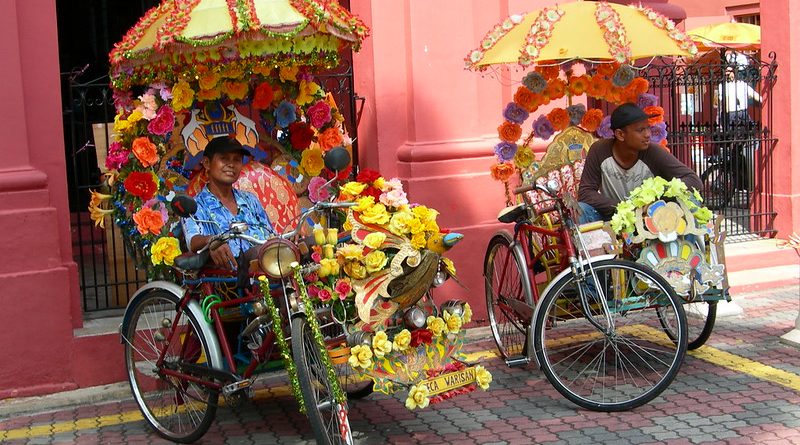A Short History of the Rickshaw
The rickshaw, invented in Japan in 1869, helped to produce a revolution in mo- bility for millions of people in Asia and Africa. By the 1930s, the everyday mo- bility offered by the hand-pulled rickshaw gave way to several of its offspring: the cycle-rickshaw, trishaw, pedicab, cyclo, becak, and the auto-rickshaw.
These “primitive” non-mo torized vehicles continue in the twenty-first century to play a valuable and ir- replaceable role in urban and rural transport in South Asian cities.
Like the sewing machine and the bicycle, the rickshaw is a simple machine that has brought about complex changes in the lives of people throughout the world from the late nineteenth into the twentieth century. In particular.
The popularity of the human-pulled vehicle invented in Japan in 1869, spread rapidly. By 1872, three years after its first appearance, there were 40,000 and by 1875 over 100,000 rickshaw on the streets of Tokyo . The number reached a peak in 1896 with 210,000 countrywide.
Rickshaws appeared in Shanghai and Hong Kong in 1874, in Singapore in 1880, in Beijing in 1886 and then to other parts of Southeast and South Asia and Africa.
The new hand pulled machines were introduced to India, first to Simla (Shimla) in 1880. In many cases, they were reserved for the use of the wealthy and the powerful, but were quickly taken over by ordinary people eager to take advan- tage of the convenience and modern lifestyle it offered.
By the early twentieth century, rickshaws were an essential part of urban locomotion throughout Asia. In some places, Hong Kong, Canton, and Bei- jing, for example, rickshaw usage benefited from the creation of Western-style paved streets and increased alongside motorization in the 1920s and 1930s.
But elsewhere, the everyday mobility offered by the hand-pulled rickshaw gave way to several of its offspring: the cycle-rickshaw, rintaku, trishaw, pedi- cab, sidecar, cyclo, becak, and the auto-rickshaw.
No singular pattern of design or layout emerged, different cities and nations constructing distinctive styles and layouts, each reflecting local customs and practice, each having particular names.The initial marriage of a bicycle with a rickshaw may have taken place in Singapore, but by the 1920s variations on this hybrid machine were everywhere throughout Asia and parts of Africa.
In Singapore, the rickshaw’s popularity increased into the 20th century. There were approximately 50,000 rickshaws in 1920 and that number had doubled by 1930. Cycle rickshaws were used in Singapore beginning in 1929. Within six years pulled rickshaws were outnumbered by cycle rickshaws ,which were also used by sightseeing tourists .
In the 1930s, cycle rickshaws were used in Dhaka,Bangladesh, Kolkata India; and Jakarta Indonesia.
By 1950 they could be found in many south and East Asian countries.[By the end of the 20th century, there were 300,000 such vehicles in Dhaka, Bangladesh




